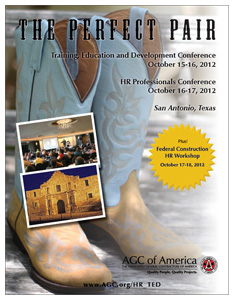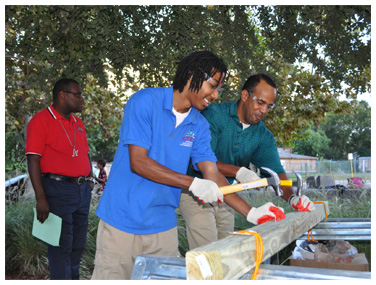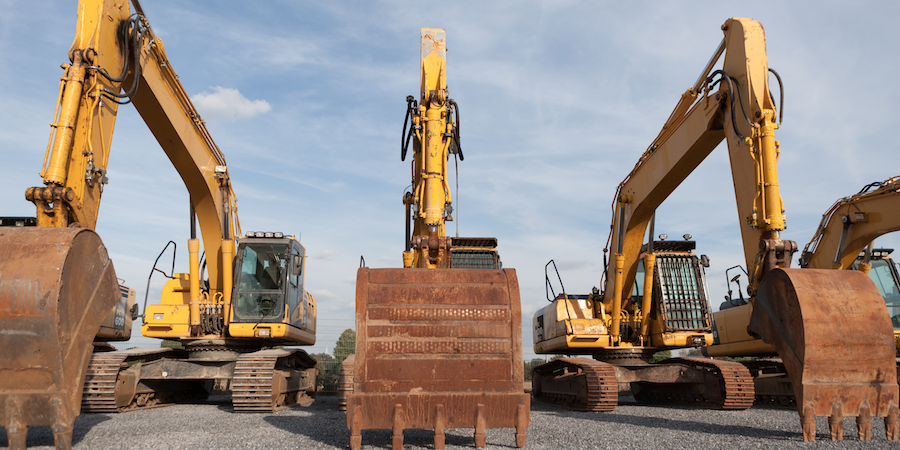The state of the American construction workforce was described as “the Wild West” during a lively panel discussion at the Aspen Institute in Washington, DC this week.During a 90 minute conversation about what can be done to improve conditions and create real career paths for construction workers, University of Illinois at Chicago Professor Nik Theodore said residential construction can be broken into two pieces: large developers/homebuilders and the specialty contractors who deal in specific skilled trades.“We’ve got an industry that’s quite fragmented,” Theodore said. “Within the residential segment, a lot of it is like the Wild West. It runs the gamut from those who play by the rules all the way to those who break the laws and routinely engage in wage theft.”
Reshaping the Construction Industry


Houston, Texas is on track to have many more well paying job openings with secure futures and stability. At least, that can be the case if we start developing our workforce to meet the upcoming demand for skilled trade construction workers. That demand will be increased if the Houston Independent School District’s (HISD) $1.89 billion bond initiative is passed in this November’s crucial election.More than “green-collar” jobs, and just as much as nursing, these “blue-collar” positions are going to boom no matter what else goes bust. These careers are the kind that can never be out-sourced, are always going to be needed, and offer practitioners the income and advancement lacking in many “white-collar” environments (just compare the wages and benefits packages for a journeyman plumber against those of recent college graduates). The best way to help our students capitalize on this trend is to start training them with the interests and aptitude for building trades beginning as early as elementary school.
October 17, 2012


Just last week, construction executive Stan Marek recently noted here on Construction Citizen, “The labor situation in Houston is heading into the biggest crisis we have ever seen.” Marek is right and the problem is just now really starting to impact builders throughout the area.To find out more, I had a chance to sit down for a few minutes with Kathryn “Toy” Wood, CEO of the Greater Houston Builders Association (GHBA) to talk about what she’s hearing from her membership. Wood says home builders around the area are already having problems scheduling projects because there simply aren’t enough skilled laborers to do the kind of work that’s required. Wood mentioned that even projects being built through GHBA’s charity, HomeAid Houston, are being slowed down because the needed workforce is simply not available.
October 16, 2012


History and Hope: The State of the WorkforceThe state of Houston’s Commercial Construction Craft Workforce is an increasingly frequent topic of conversation with contractors and owners. These discussions always prompt worry and concern. And, well they should. Here are the brutal facts:For the past 30 years, the industry has been unable to attract young Americans to study the construction trades. Craftwork is currently unattractive to high school graduates as a career path, and it is further discouraged as a choice by both parents and guidance counselors; it has become the career of last resort.
October 15, 2012


A Houston construction executive is in the national spotlight this week for a conversation about how to improve working conditions and create a real career path for blue collar men and women from coast to coast.Mike Holland, Division President of Marek Brothers Systems, Inc. will join Workers Defense Project Policy Analyst Emily Timm and others in Washington for a forum moderated by NPR’s Yuki Noguchi. With support from the Charles Stewart Mott Foundation and the Ford Foundation, this series, Reinventing Low Wage Work: A Discussion on the Workforce in Residential Construction, takes an explicit look at the growth of occupations like construction, nursing assistants, food servers and cashiers, and the challenges those workers face.You can register for Thursday's discussion on the Aspen Institute’s Workforce Strategies Initiative website.
October 13, 2012


According to ArchDaily, an architectural publication, a new 96-story building designed by Skidmore Owings and Merrill, LLP (SOM) broke ground this year. Designed by the same firm that created the Burj Khalifa in Dubai, the CTF Tianjin Tower in China will be the 14th tallest in a long string of tall buildings to be completed worldwide by 2020.The tower’s structure will contain eight sloping columns designed to stabilize the supertall building during earthquakes. Several multi-story wind vents and the aerodynamic outer shape of the building will help it remain steady against high wind speeds. ArchDaily quotes SOM Structural and Civil Engineering Partner William Baker:“The single most important structural parameter of a tall building is the architecture. The CTF Tianjin Tower will be significantly quieter, with less movement than other tall buildings. We tested 18 schemes in the wind tunnel before finalizing the design.”
October 12, 2012


The idea that a four-year degree is the only path to success in America is an outdated notion. Numerous recent studies have found that our educational system as it currently exists is not producing enough graduates with the skills that employers are looking for, particularly in the construction and manufacturing industries. For example, the Construction Labor Research Council predicts that 185,000 new workers will be needed annually for the next decade. The need for a skilled construction industry workforce is compounded by the lack of a strong pool of young craft professionals to replace the older generation as they retire.As part of our ongoing efforts to underscore the importance of Career and Technical Education (CTE) as the key to narrowing this skills gap and raising awareness of the well-paying career opportunities in construction, the Build Your Future (BYF) initiative has developed a wide range of resources to help young people and displaced workers find careers in our industry.
October 11, 2012


The Associated General Contractors of America’s (AGC) 6th Annual Training, Education & Development Conference (TED) is next week and I encourage you to attend. There is still time to register. General and specialty contractor staff and other professionals involved in workforce and professional development, education, human resources and training are invited to attend. This year’s event is in San Antonio, a great venue.Workforce professionals value continuing education. This event offers some extremely practical sessions for those tasked with providing training and development opportunities for your company. A few highlights include:Informal Learning: Connecting, Learning and Relationships with PurposeDeveloping Effective Job AidsHow Defining Competencies Can Benefit Training, Task Analysis, Promotion, Compensation & Succession PlanningPerformance Problems in the Workplace: Diagnosing Root Causes and Possible SolutionsLiz Elvin, Senior Director of Workforce and Education Advancement for AGC, stated:
October 10, 2012


The labor situation in Houston is heading into the biggest crisis we have ever seen. For decades, our industry has relied on an immigrant labor force that, prior to 9/11, could cross our borders with very little problem. That all changed after that tragic day and now crossing the border can be extremely expensive as well as dangerous.After the subprime mess and the fall out, many in the construction industry found that the jobs they once took for granted were gone. Many returned to their native countries while others changed jobs, usually accepting less pay and fewer opportunities. Contractors were pressured to lay off employees and hire “contract labor” to try to compete for a much smaller volume of work.With the failure of government agencies to uniformly enforce wage and hour laws, many “contract” workers paid no payroll taxes, overtime, or costs of workers’ compensation insurance. This gave them a tremendous cost advantage that ultimately led to lower wages throughout the industry.
October 09, 2012


You never know where you’re going to find new career opportunities for the nation’s youth. During a National Night Out event in Houston last week, we found some young boys and girls getting a taste of what it’s like to be a carpenter.Darryl Samuels, Managing Partner of construction management and commercial development company D. Samuels & Associates, LLC, told Construction Citizen that he’s constantly trying to find ways to get young people interested in the skilled trades. We've done our best to highlight these kinds of efforts on Construction Citizen. For his part, Samuels brought nails, hammers and some wood to an event in the Kashmere Gardens neighborhood and invited kids to give it a try. Samuels remarked:“The point is to introduce them to construction. A lot of kids just don't know anything about it. The younger they are, the more interested they are.
October 08, 2012



.jpeg?itok=6uFZXEBH)





.jpeg?itok=4Vi_1nJG)













